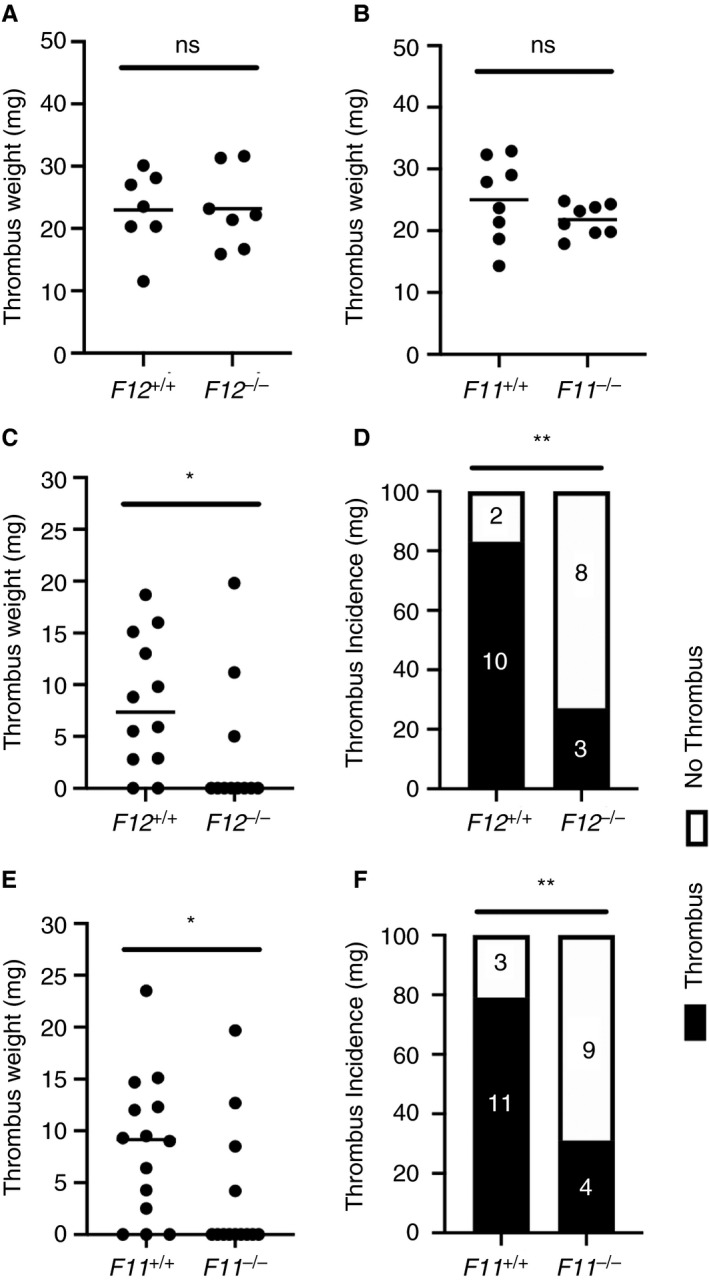FIGURE 1.

Effect of FXII and FXI deficiency on venous thrombus formation in the mouse IVC stasis and IVC stenosis models. FXII‐ and FXI‐deficient mice were subject to the IVC stasis model or IVC stenosis models of venous thrombosis and compared to wildtype littermate controls. A, Thrombus weight at 48 hours postinduction did not differ significantly between F12 −/− mice and F12 +/+ controls in the IVC stasis model (n = 7 per group). B, In the IVC stasis model, a small nonsignificant decrease in thrombus weight was observed in F11 −/− mice compared with F11 +/+ controls (n = 8 per group). ns, P > .05 Student t test. Thrombus weight data are represented as individual values with a line for the mean. C, In the IVC stenosis model, F12 −/− mice demonstrated a significant reduction in median thrombus weight at 48 hours postinduction compared with F12 +/+ controls (n = 11‐12 per group). D, A significant reduction in the incidence of venous thrombus formation in F12 −/− mice was observed compared with F12 +/+ controls. E, F11 −/− mice subject to the IVC stenosis model demonstrated a significant reduction in median thrombus weight at 48 hours postinduction compared with F11 +/+ controls (n = 13‐14 per group). F, A significant reduction in the incidence of venous thrombus formation in F11 −/− mice was observed compared with F11 +/+ controls. *P < .05, Mann‐Whitney U test, **P < .05 Fisher exact test. Thrombus weight data are represented as individual values with a line for the median
